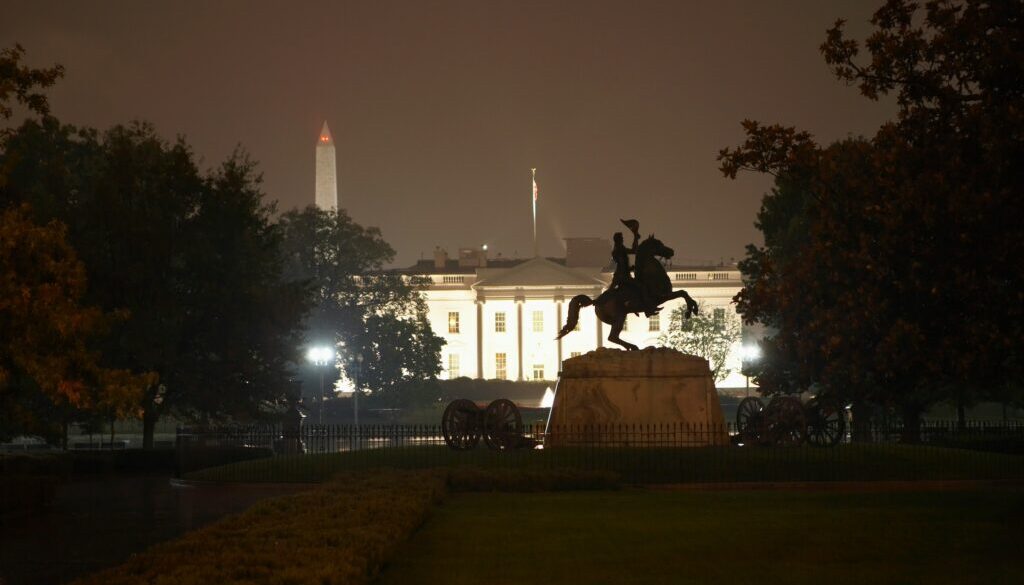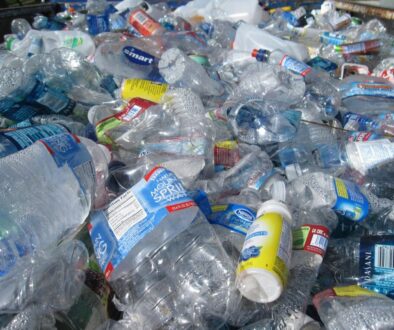Amid series of rapid-fire policy reversals, Trump quietly withdraws proposed limits on PFAS
Amid a flurry of actions curtailing Biden’s environmental policies, the administration of newly inaugurated President Donald Trump this week withdrew a plan to set limits on toxic PFAS chemicals in industrial wastewater.
The draft rule, which the US Environmental Protection Agency (EPA) sent to the White House for review in June, was seen as a precedent-setting move by reducing allowable discharges of per- and polyfluoroalkyl substances (PFAS), a class of chemicals that have been linked to an array of health problems.
“It is abundantly clear that this action was taken to benefit the chemical industry – and every American will suffer for it,” said Kyla Bennett, director of science policy at the watchdog group Public Employees for Environmental Responsibility. “PFAS contamination is already a national health crisis, and this will force states to try and fill the regulatory void left by EPA’s failure. “
The decision to withdraw the draft rule came as Trump issued an executive order to freeze any new federal regulations pending review.
Though the initial rule would have applied to only about 13 facilities, almost 30,000 industrial sites have been identified as potential sources of PFAS in the environment, including drinking water sources, according to a 2021 analysis of EPA data by the nonprofit Environmental Working Group (EWG). And the EPA itself has identified more than 120,000 facility sites around the US where the agency says people may be exposed to PFAS.
The proposal’s withdrawal is a “devastating setback” that “not only delays establishing critical federal standards but also sends a dangerous message giving polluters a green light to continue poisoning our water and communities without fear of consequence,” Melanie Benesh, EWG vice president for government affairs, said in a statement. “It’s an unconscionable betrayal of the public’s health in favor of corporate interests.”
When asked about the move, an EPA spokesperson said it was “common transition procedures,” to pause major decisions, including a hold on new and pending regulations.
“President Trump advanced conservation and environmental stewardship while promoting economic growth for families across the country in his first term and will continue to do so this term,” the EPA spokesperson said.
PFAS are a class of thousands of human-made chemicals that widely contaminate US water sources, food, food packaging and household dust. Under former President Joe Biden, the EPA released a report last week concluding that PFAS in sewage sludge used to fertilize farmland poses health risks. Some of the chemicals have been linked to certain cancers, liver damage, thyroid disease, immune system dysfunction and other health problems.
The agency last spring designated two well-studied types of PFAS, perfluorooctane sulfonic acid (PFOS) and perfluorooctanoic acid (PFOA), as hazardous substances under the Superfund law and announced the first legally enforceable limits for these and four other types of PFAS in drinking water.
The move to withdraw the PFAS discharge rule is one of a barrage of actions taken in the first days of the new Trump White House that have alarmed health and environmental groups.
Among others, Trump issued executive orders withdrawing the US from the Paris Climate Agreement (which will go into effect next January), encourages opening Alaska’s Arctic National Wildlife Refuge for oil and gas drilling, and declaring an “energy emergency,” which would suspend regulations including the Endangered Species Act to boost US fossil fuel production.
“There is no energy emergency. There is a climate emergency,” Manish Bapna, president and CEO of the Natural Resources Defense Council (NRDC), said in a statement.
“There’s a whiff of American oligarchy in actions meant to further enrich billionaire oil and gas donors at the people’s expense. Floods wash away entire communities, drought bakes croplands to chalk, and firestorms engulf our cities in flames. This is no time to abandon ship, cut US climate leadership adrift, and throw our children overboard,” Bapna said.
Also of concern to environmental groups, Trump’s Department of Energy this week reversed Biden’s pause on export permits for liquified natural gas, temporarily halted federal approvals for offshore wind projects and reversed tailpipe emissions standards designed to help popularize electric vehicles (EVs).
“The President’s actions will undermine investments, jobs and affordability for electric vehicles – all while allowing more climate and health-harming pollution into our air,” Peter Zalzal, associate vice president for Clean Air Strategies at the Environmental Defense Fund, said in a statement.
Some environmental advocates question whether the Trump administration actually has authority to carry out the executive orders.
“The United States has some of the strongest environmental laws in the world, and no matter how petulantly Trump behaves, these laws don’t bend before the whims of a wannabe dictator,” Kierán Suckling, executive director at the Center for Biological Diversity, said in a statement. “The use of emergency powers doesn’t allow a president to bypass our environmental safeguards just to enrich himself and his cronies.”
Trump also issued an executive order withdrawing the US from the World Health Organization. The WHO includes the International Agency for Research on Cancer (IARC), which offers a globally recognized standard for identifying carcinogenic substances. However, the two agencies have distinct governing and funding structures, said a spokesperson for IARC.
“As of today, there have not been any changes or announcements indicating an intention by the US to withdraw from IARC,” said the agency spokesperson.
(Featured image by Getty Images via Unsplash+.)





January 25, 2025 @ 4:26 pm
When trump loves his rural NC MAGA voters less than he love the corporate donors.
January 25, 2025 @ 6:04 am
Industry has destroyed my neighborhood. Pollution kills. Soil, air, and water full of toxic waste. Where is my justice. Fence line community. Told don’t eat veggies grown in soil. EPA gave grant to state for air monitoring. Was to be running last July last I knew still not working. WHY!!! 120 households approximately lost over 30 residents last six years none from covi. EJ screen couldn’t get any redder for our neighborhood. Then I read this. Not to mention water we can’t drink!!
January 27, 2025 @ 11:10 am
I think you probably already know the answer, Barbara. Insert obvious stuff here about profits over people and planet, but I think also while it’s easy enough to blame Trump (as a useful puppet to industry), this problem is more systemic. The EPA has been a failure for most of its existence, either failing to act or acting too slowly to make a meaningful difference for communities like yours and mine.
It’s a problem of goverNANCE more than governMENT: specifically that people in general, and frontline communities in particular should have collective direct democratic power in decisions over land use.
The utter absence of participatory planning or processes is an institutional failure across the whole of government. We need full-bodied representation (i.e real power), but all they’ve ever offered is “representatives”, corrupt bureaucrats beholden to any number of corporate interests.
“Conservative”, “Liberal”, the whole Washington Consensus has been a 250 year okey doke they cheekily call a “democracy”.